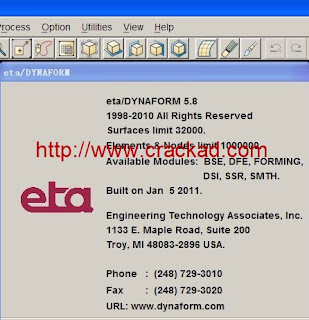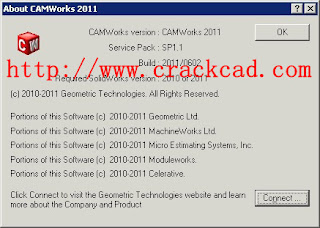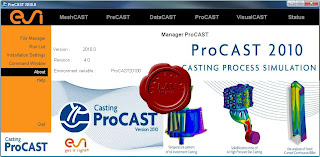Installation
============
This CD contains the following installation options:
- View Release Notes: View these release notes.
- Install Software: Use this option to install PExprt(tm) on your local machine.
- Install Maxwell: Use this option to install Maxwell 2D v11.1.1 on your local
machine.
The following are changes made in PExprt v7:
2DModel
1. Added interface with Maxwell 12.
2. Corrected issues concerning file paths with blank spaces.
3. Modified log file names to avoid rewriting Maxwell ones.
FEA2fb
1. Added interface with Maxwell 12.
FEALossesCalc
1. Added interface with Maxwell 12.
2. Corrected issues concerning file paths with blank spaces.
3. Modified log file names to avoid rewriting Maxwell ones.
MGen
1. Added interface with Maxwell 12.
2. All graphs represented using ChartFX.
3. Corrected issues concerning file paths with blank spaces.
4. Fixed memory allocation problem in thermal model calculation.
5. Modified log file names to avoid rewriting Maxwell ones.
6. Modified initial values of winding parameters for synthesis of impedances.
7. Modified dotted terminals of Double2D components.
MGen1D
1. Added interface with Maxwell 12.
2. Corrected issues concerning file paths with blank spaces.
3. Closed file when writing thermal model symbol.
4. Fixed memory allocation problem in thermal model calculation.
mmt2FEA
1. Added interface with Maxwell 12.
2. Corrected assignation of currents in short circuit tests of components with three or more windings.
3. Modified boundary conditions in lateral simulations of toroids and Double2D components.
4. Modified physical parameters of materials.
5. Fixed boundary condition in thermal simulation.
6. Modified drawing of areas to avoid overlaps in toroid simulations.
7. Corrected wire dimensions to avoid overlaps with adjacent isolators.
8. Corrected electrical conductivity for electric analysis of equivalent layers.
9. Modified current sources and electrical conductivities of equivalent layers made of twisted wire.
10. Corrected assignation of currents in open circuit tests of lateral views of Double2D components.
11. Updated macros for the representation of magnetic flux lines and energy maps.
PEmag
1. Added interface with Maxwell 12 and Simplorer 8.
2. All graphs represented using ChartFX.
3. Corrected issues concerning file paths with blank spaces.
4. Added design of magnetic components with laminated core (electrical steel).
5. Added new library (ElectricalSteel.pml) and library components for the design with laminated cores. The library contains EI and UI sheets in several sizes and thicknesses (IEC 60740), grain oriented (EN 10107) and non oriented (EN 10106) magnetic materials, and wires of several sections.
6. Corrected dimensions checking in dialogs for Drum and T core shapes.
7. Corrected dimensions checking in coil dialog. Detailed warnings were added to help user in error correction.
8. Core material resistivity is shown in ohm穖, mohm穖 or uohm穖 (depending on resistivity value) to make reading easier.
9. Fixed classification of materials in library tree.
10. Minimized program when called from PExprt.
11. Maxwell and Simplorer programs can be selected from installation directories or they can be found automatically after choosing version.
12. Increased resolution of frequency sweeps to 100 points.
13. Added checking of correct simulation finish.
14. Simplorer set as default simulator if none is specified.
15. Corrected dimensions to avoid area overlaps in Maxwell.
16. Corrected units of thermal conductivities (replaced W/篊*m and W/篊*in with W/篊/m and W/篊/in).
17. Modified log file names to avoid rewriting Maxwell ones.
18. Eliminated unsolicited opening of Maxwell project after representing energy map in capacitive analysis.
19. Linked with PEmag help in pdf.
20. Fixed frequency sweep to simulate models created at a single frequency.
21. Modified frequency limits of resistance and inductance graphs for models created at a single frequency.
22. Epcos library. Deleted duplicated E19/8/5 core.
23. Ferroxcube library. Corrected effective area of E32/6/20 core. Deleted duplicated E32/6/20 core.
24. Magnetics library. Added High flux (14u, 26u, 60u, 125u, 147u, 160u), Kool Mu (26u, 60u, 75u, 90u, 125u), MPP (14u, 26u, 60u, 125u, 147u, 160u, 173u, 200u, 300u, 550u), and XFlux (60u) materials.
25. Micrometals library. Materials moved from the 慒errite?folder to the 慖ron Powder?one.
PExprt
1. Added interface with Maxwell 12.
2. All graphs represented using ChartFX.
3. Corrected issues concerning file paths with blank spaces.
4. Program modified to send true laminated and Metglas core designs to PEmag, using new program capabilities. No equivalent cores are generated before calling PEmag.
5. Corrected dimensions checking in dialogs for EE, EELam, EFD, EI, EILam, EP, ETD, POT, PQ, RM, TOR, UI, UILam, UU, and UULam core shapes.
6. Corrected dimensions checking in coil dialog. Detailed warnings were added to help user in error correction.
7. Modeling language was not recognized when sending a component to PEmag.
8. Fixed error when generating Maxwell setups for calculating load losses in sinusoidal regime.
9. Modified warning concerning coil unavailability when designing magnetic components.
10. Maxwell program can be selected from installation directory or it can be found automatically after choosing version.
11. Modified signs of currents of center-tapped windings for transient simulation with Maxwell.
12. Fixed behavior of 揺nter?key when modifying frequency and duty cycle in waveform transformers.
13. Added checking of correct simulation finish.
14. Simplorer set as default simulator if none is specified.
15. Corrected calculation of permeability as a function of magnetic field when alpha is equal to one for non-gapped inductors, coupled inductors, and flyback designs.
16. Component parameters are calculated from Double 2D models extracted in PEmag when available.
17. Fixed representation of the results of the transient simulations of the lateral views of toroids.
18. Updated permeability and AL values when 揚ermeability = f(H)?option was active designing non-gapped inductors, coupled inductors, and flyback converters.
19. Corrected units of thermal conductivities (replaced W/篊*m and W/篊*in with W/篊/m and W/篊/in) and film coefficients (replaced W/篊*m^2 with W/篊/m^2).
20. Corrected calculation of open- and short-circuit impedances.
21. Modified log file names to avoid rewriting Maxwell ones.
22. Linked with PExprt help in pdf.
23. Planar components designs with winding connections close to the core are rejected if 揙nly ext. connections?winding setup is selected in the 揇esign Inputs?tab.
24. Epcos library. Added RM4LP core and deleted duplicated E19/8/5 and E32/16/11 cores. Replaced R3.05x1.78x20.3 with R3.05x1.78x2.03
25. Ferroxcube library. Corrected dimensions of ER/42/22/16, TC3.9/1.8/2.5, TN29/19/15, TX102/66/15, TX140/106/25, and TX50/30/19 cores. Corrected effective area of E32/6/20 core. Deleted duplicated E32/6/20, T107/65/25, TX13/7.1/4.8, and TX74/39/13 cores. Modified Steinmetz parameters of 3C96 material.
26. Magnetics library. Coil ETD42523 named as EFD42523. Added MPP (14u, 26u, 60u, 125u, 147u, 160u, 173u, 200u, 300u, 550u), and XFlux (60u) materials.
27. Micrometals library. Materials moved from the 慒errite?folder to the 慖ron Powder?one. Corrected dimensions of E610 and HS400 cores.
28. Steward library. Replaced T0870_000 with T0870-000.
29. TDK library. Deleted duplicated T44.5*13*30 core.
Xtor1D
1. Corrected calculation of open- and short-circuit impedances.
Xtor2D
1. Corrected calculation of open- and short-circuit impedances.



